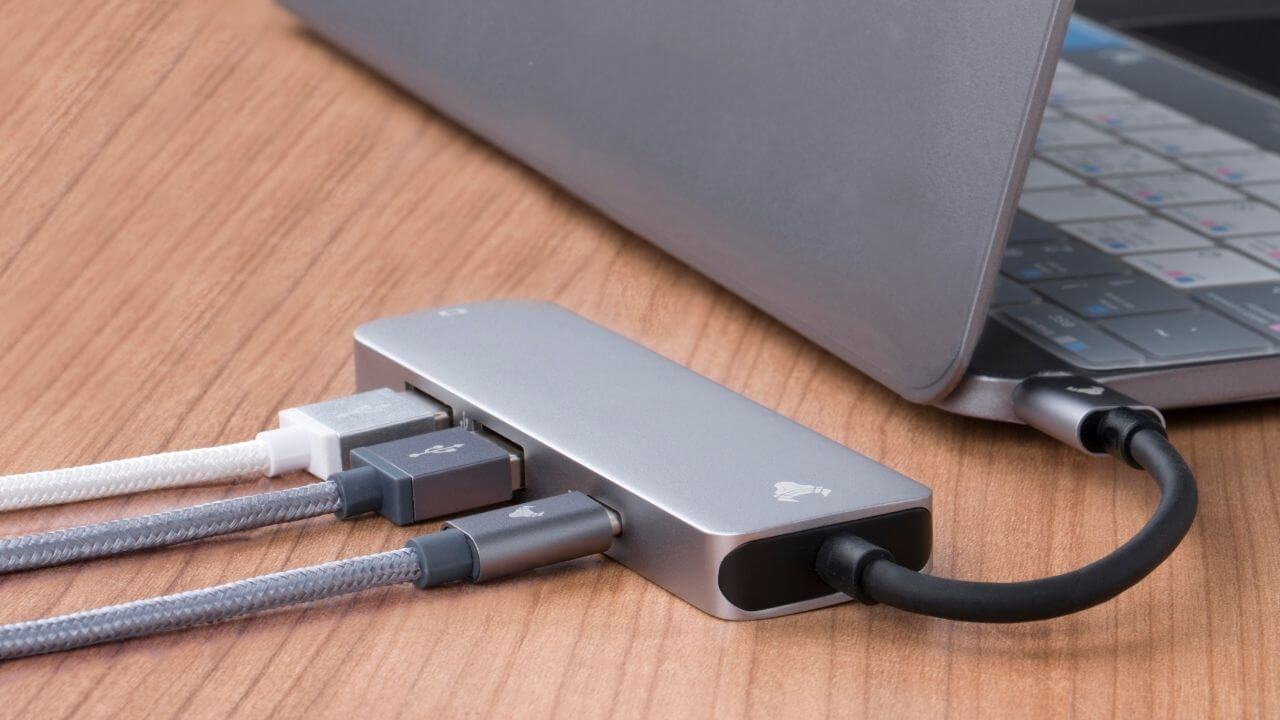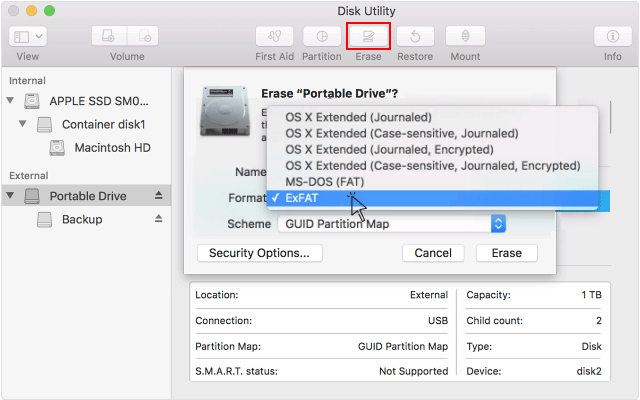

- #Using a usb formated for a mac on a pc mac os#
- #Using a usb formated for a mac on a pc install#
- #Using a usb formated for a mac on a pc update#
- #Using a usb formated for a mac on a pc android#

In the previous graphic of flexense we can see the performance of exFAT on FAT32, and in the following link we will be able to look in detail multiple operations carried out by this software developer called Flexsense
#Using a usb formated for a mac on a pc update#
Then update the packages running the line: sudo apt-get update Reading & Writing SpeedĪnother of the pillars in a file system is the ability with which this can access the content and read or write it since this depends on optimal performance which is a highly required value today. Undoubtedly in this regard exFAT outperforms FAT32 to be a much more recent technology which is compatible with USB 3.0 which can have a transfer rate up to 5 Gbps.
#Using a usb formated for a mac on a pc install#
In some Linux distros the exFAT file system will not be recognized immediately, so we must install the several utilities by executing the following line: sudo apt-get install exfat-utils exfat-fuse
#Using a usb formated for a mac on a pc android#
In this field, we can say that FAT32 has an advantage over exFAT because, being an old file system, it is compatible with all operating systems and devices such as game consoles, Smart TV, multimedia players and others.ĮxFAT, although it is currently compatible with more than 95% of the devices on the market, can still find individual limitations in some Linux distros or Android devices. This is the first fundamental field since if the USB device formatted with FAT23 or exFAT is not compatible with the device where it has to be connected it will be impossible for it to be recognized and to access its contents. Now we will analyze a little more in detail the fields of action where these two file systems are compatible to know which is the best option to choose.
#Using a usb formated for a mac on a pc mac os#
exFAT:ĮxFAT is in a way a more modern and dynamic FAT32 which was developed in 2006 and is present in most modern operating systems.īy default, all traditional operating systems, Windows, Linux or Mac OS are compatible with exFAT, and its use is highly recommended for external drives, such as USB devices or external drives, thanks to its simplicity and multiple features.

This format is one of the most compatible, but due to its useful life, it has been in force since the 90s, it has a series of limitations that can affect the pace of updates we are experiencing today.īeing a format with so much active time is compatible with virtually any operating system.Īs mentioned, it has its limitations such as the inability to host files larger than 4 GB or that partitions with this file system cannot have more than 8 TB capacity. Let’s see in detail what is and what covers each of these file systems. In technical terms, it has been recommended that the file system of the USB drives be FAT32 thanks to the fact that it is an old file system and that it has evolved to FAT32 at present, but there is a format that is much better regarding security, reliability, and compatibility: exFAT.



 0 kommentar(er)
0 kommentar(er)
